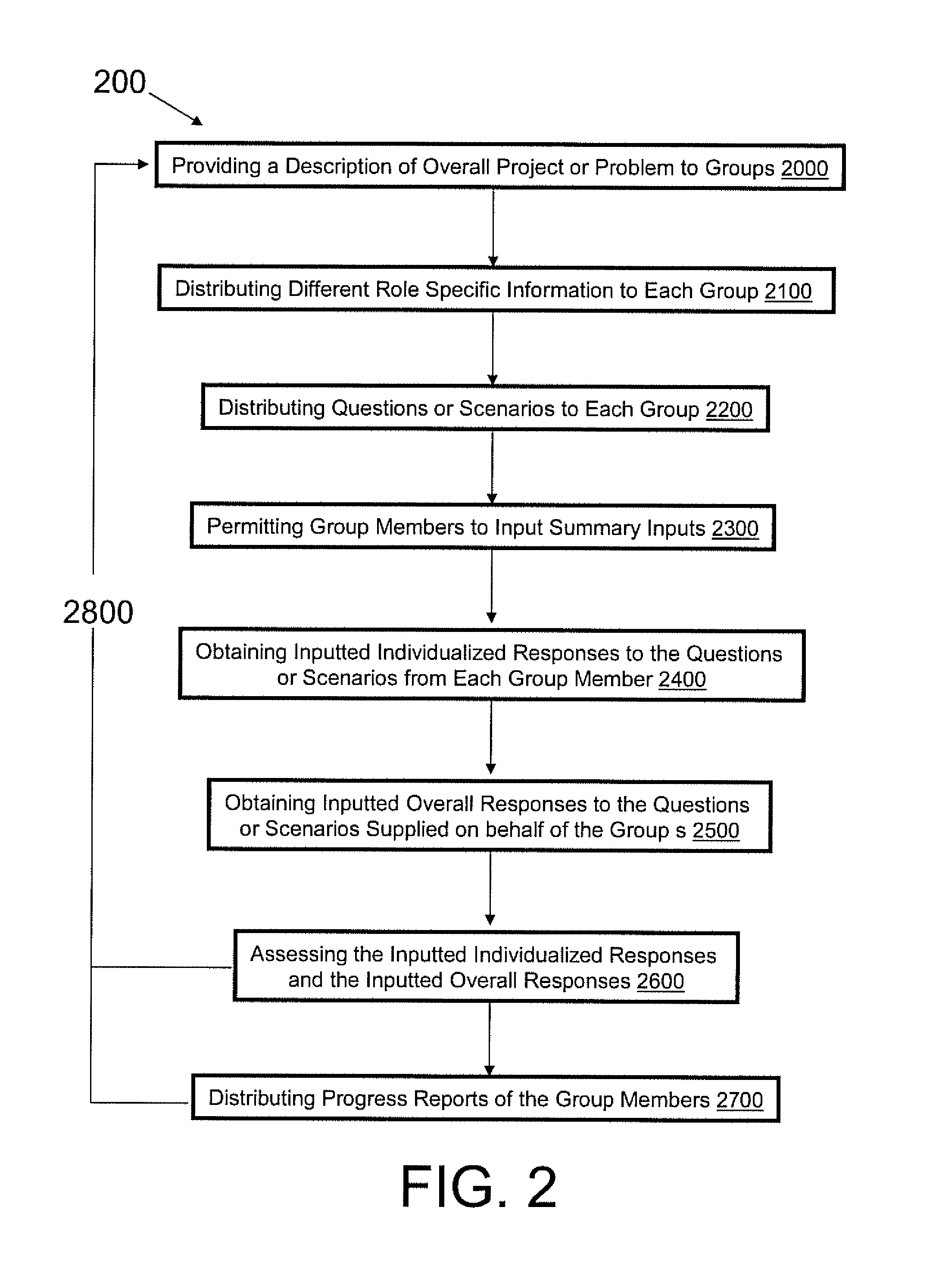Computer Implemented Methods, Systems and Products for Team Based Learning
- Summary
- Abstract
- Description
- Claims
- Application Information
AI Technical Summary
Benefits of technology
Problems solved by technology
Method used
Image
Examples
example 1
[0063]Experimental Testing
[0064]The computer implemented methods, systems and products described above were put into practice as an experiment with 529 senior students at a university level from a variety of disciplines, including medicine, nursing, pharmacy, and social work. The students participated in a four-unit, six-week trial of the case system. The overall project and questions focused on geriatric care. The following methodologies and resulting data are provided as an example and by no means limit the implementation and / or application of the computer implemented methods, systems and products detailed above in the figures.
[0065]During the 2012-2013 academic year, all enrolled fourth year students in medicine and nursing (BSN programs), some volunteer fourth year pharmacy students, and all second year masters students in social work in the clinical practice concentration were placed in teams of 4-9 groups for one of four sequential six-week blocks (two blocks in each semester)...
example 2
[0094]The application of the present invention is not limited to a health care setting or health professions education but is applicable to education or training in any setting where collaboration and coordination within a team is important. For example, the present invention may assist in the construction setting. This invention may be used to train teams of engineers, architects, and / or group managers to organize and to work together on a construction project. Implementation of the present invention allows for the assessment of how the overall group plans and implements a construction project while also providing individualized assessments of the abilities of each group member.
[0095]As a further example, the present invention may also be applicable to a corporate setting. A company, which is seeking to have various employees from different departments work together on a problem or project, may utilize and implement this invention to assess each employee's collaborative abilities, ...
PUM
 Login to View More
Login to View More Abstract
Description
Claims
Application Information
 Login to View More
Login to View More - R&D
- Intellectual Property
- Life Sciences
- Materials
- Tech Scout
- Unparalleled Data Quality
- Higher Quality Content
- 60% Fewer Hallucinations
Browse by: Latest US Patents, China's latest patents, Technical Efficacy Thesaurus, Application Domain, Technology Topic, Popular Technical Reports.
© 2025 PatSnap. All rights reserved.Legal|Privacy policy|Modern Slavery Act Transparency Statement|Sitemap|About US| Contact US: help@patsnap.com



